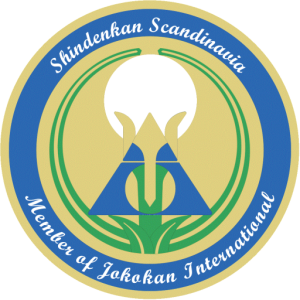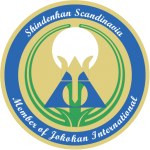By Martin E. Hansen, Member until 2018
Twice a year, Shindenkan black belts meet for their own training convention – summer and Christmas, to be taught by Grandmaster Kimu Sensei. The competitions are a unique opportunity to get a concentrated learning process and the only opportunity for black belts to complete a graduation process. This is because you have to participate in the so-called SBTLUS in order to graduate, as it is Kimu Sensei's only opportunity to see the individual students and assess whether they are ready for graduation, know their syllabus, have the right attitude, etc. This year there were no graduations, but the opportunity is always there, so all participants naturally showed up with the attitude and focus that every training is a graduation test, and Kimu Sensei was subsequently also happy with the participants' focus, commitment and willingness to learn, for whom as a teacher, don't want to waste time on someone who doesn't want to learn and just needs time to pass - no one 🙂
On a cold December Friday afternoon, this year's second and last SBTLUS convention was kicked off by Kimu Sensei, and as announced in the invitation, the topic would be Koryo Naihanchi 1 & 2 under the heading "One stroke one kill", it sounds deadly in this sweet Christmas time, but that's no mean feat, on the contrary, it's very life-affirming. SBTLUS is a concentrated course and somewhat resembles an RRCAMP course understood in the sense that it extends over 26 hours, but unlike RRCAMPs, the participants get the opportunity to sleep between the two training days. RR stands for Ryugi and Ryuha – theory/philosophy and technique, which every course designed by Kimu Sensei includes and thus also SBTLUS. But this year, Kimu Sensei had decided that the participants should have an influence on the content of the Ryugi part and thus issued an invitation to send him questions about Shindenkan, martial arts and martial arts, etc. in advance, to which they wanted an in-depth answer. Kimu Sensei had expected to get a good handful of questions from the 14 participants, but the mailbox was almost bombarded and he had collected the essence of a total of 72 questions that he entertained with the first few hours on Friday afternoon. Among other things, questions about the future of Shindenkan, the difference between martial arts and martial arts, how Kimu Sensei trained, etc. were reviewed. Especially the question of what martial arts is and how to train at a high level, Kimu Sensei tried to explain as well as he could in layman's terms. But it is difficult and as he said "How do you explain to a person from Gundsømagle who asks what the world looks like when he has only been to Gundsømagle and you yourself have traveled all over the world?" . It's hard to get used to, but the picture is actually very good. Most people know it from our own everyday life on a smaller scale ”How does an IT professor explain to an alm. uses how a microprocessor is built or how the entire Internet is screwed together when it can only use Word". Another question was about explaining the connection between martial arts and martial arts, or the connection that is not there. Martial arts are kyu and dan degrees, martial arts are densho degrees. In principle, the two have nothing to do with each other, other than that on the outside the same techniques are trained, but the content (the inside) is very different. Here it also emerged that martial arts only really start from full Menkyo (6-7th dan in martial arts) and correspond to white belt, if you want to draw a parallel to martial arts 🙂 so there is really a long way to just the beginning, where you have learned to know oneself. But karate and especially Yakami Shinsei-ryu is a good tool and a common thread designed to help you on your way to the martial arts path - if you want to. Kata is the tool through which you show your best technique and knowledge also in martial arts, so after this Ryugi lesson, it was time to get physical and the participants moved towards the dojo.
After a self-selected warm-up, Kimu Sensei immediately started the evening's 2nd lesson, which was Koryo Naihanchi 1. But as usual, Kimu Sensei had chosen a theme that would repeat itself throughout the SBTLUS training convention and the subsequent Xmas convention for everyone "Why not be good by oneself – and learn the right thing from the beginning? – and continue this – all the time?” Of course, there is more behind these words than just the words themselves. You can train a kata as a pure figure exercise and then it remains a martial art, you can also choose to train with the aim of learning something about yourself and constantly getting better and maybe getting closer to martial arts. It is about trusting what you are told and showing confidence in 1000 years of experience and knowledge, it is not by chance how a kata is built up, there are different symbols, principles and forces that together provide learning at a higher level , which you have to be a martial artist to understand. But you can start by training and train properly, so that the small details come along, this is the prerequisite for later being able to lift kata to a higher level. It's details like cross-tensions, tachi-ai (connecting the right) points, but it's also about not complicating things and just making it natural, which is very easy to say but harder to do. But the grandmaster is there precisely to help you follow the right path and train the right thing rather than you training on something wrong and your own interpretation 🙂 We worked well and for a long time with the various series in Koryo Naihanchi and Kimu Sensei was around among all the participants and correct, but also challenge the individual's limits and control, because most people would prefer to have control over the movements, but too much control also inhibits yourself, and kata is precisely about showing yourself. Control also means that you physically cannot generate the power that your potential is sufficient for and Koryo Naihanchi is precisely about maximum power generation and "one strike one kill". Is it about killing....that's how it can be perceived in a martial arts world, if you train to defend yourself and beat the bitch. But in principle it is easy to kill, it is immediately much more difficult to give life or give life and be conscious of it. It sounds nice, it is, and something we ordinary practitioners probably have to train for many years to understand, but it's nice to think that you can create something rather than destroy something, something we can relate to in everyday situations, where missed deadlines, infidelity, lies and deception create havoc, destruction and bad energy, while good preparation, loyalty, kindness and love create good energy and perhaps what "one strike one kill" is really all about. 2 hours go by quickly in the company of a martial art grandmaster, where you try to get everything in, but it's good that afterwards there was 1 hour to train everything you had learned, as the participants had CISIS training according to the rule, look but don't talk 🙂 CISIS training gives you the opportunity to enter your own "cheese bell", but also observe the world around you, i.e. how the others have perceived the training, and thus establish whether you have the same opinion on how the techniques should be performed. With this, you don't "judge" others on what they say they want to do, but what they actually do, where you can learn from your and others' real "actions".
After the training, there was time for a short shower for those who wanted and eating food, for some it was packed lunches and for others pizzas from the local pizzeria. The rest of the evening ie. from approx. 20.30 was also planned by Kimu Sensei, where the participants were divided into groups and had to solve a task before the next morning, but at the same time they were also not allowed to finish later than 23.00 so they could get home and get their beauty sleep 🙂 The task, in all its simplicity, was about "The ideal annual training process - for me and the others - Local, federation like Honbu for Brown and black belts". In addition to this, the chief instructors together with their team of instructors had to put the finishing touches on the training plan so that it could also be approved the next morning. Work was intensively carried out until 11:00 p.m., when a meeting was again called to ensure that Kimu Sensei had received the result in his mailbox so he had some of the night to look through the result, but also to ensure that everyone was ready for tomorrow and still knew good courage. After that, the trip went either home or to a Shindenkan friend to sleep or make the final preparations for the next day's Xmas meeting.
The next morning there was a meeting again at 08.00, where there was Ryugi training and roll and coffee intake. Kimu Sensei was in high spirits and happy for the contributions he had received the night before and especially happy for the work effort that everyone had delivered the day before, both on Ryugi and Ryuha's part. Around. At 10.00 the participants turned their noses towards the dojo again, very excited about what Kimu Sensei had come up with. To start with, the participants had to show what they had practiced the night before during CISIS. It wasn't quite as it should have been, so a recap was in order so that everyone could get in the right "gear" again. Koryo Naihanchi 1 was originally a beginner kata…..in martial arts 🙂 so for common mortals it is a brown/black belt kata. To explain Koryo Naihanchi, Koryo Naihanchi 2 & 3 were developed, so the contestants now had to train on Koryo Naihanchi 2 (the movements were already practiced before the competition). Similar to the day before, Kimu Sensei came with in-depth explanations and details that had to be incorporated. Most could recognize the principles from Naihanchi 1 and in particular when Kimu Sensei pin pointed where the different tachi-ai, cross tension etc. went again and elaborated in Naihanchi 2. During 2 hours the participants got through all the movements and got plenty of training during the Christmas holidays and beyond. It was 12.00 and SBTLUS officially ended, but the day had only just begun 🙂
26 intense hours, of which 17 were trained, had passed and the participants could breathe a little before this year's X-mas event for everyone had to be held. For some, it was time for the final planning of the training program and rehearsal at Shindenkan Gangnam Nisse style 🙂 for others setting up the podium and preparing all the practical things before the event and instructor meeting, and then just a light lunch. But it was clear in everyone's eyes that it had been a really good SBTLUS meeting, where every single participant had been challenged at their own level and could now have a well-deserved Christmas holiday and maybe train a little on the sly between the roast duck, Christmas lunches and schnapps.




